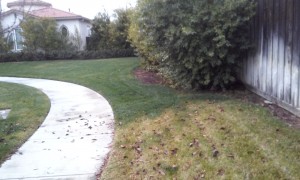You might be surprised to see how many plants are producing color in the winter here at Alden Lane! Azure Bush Germander is in full (blue) bloom, Grevilleas and Leucadendrons are plants from Down Under, showing foliage or flower color now. Com into the nursery now to select plants that give your garden year-round appeal.
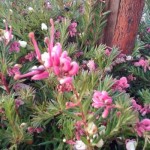 |
Grevilleas These beauties come from the Land Down Under. Grevilleas grace the winter garden with swirls of pink or red blossoms. They range in height from rolling groundcovers to towering trees, most grevilleas in the nursery are in the mid-range as far as heights go, at about 4-5 feet. Grevilleas are drought tolerant! |
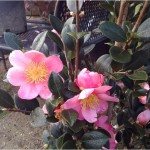 |
Sasanqua Camellias
Many Sasanqua Camellias begin to bloom in November and flower colorfully through winter. Generally thought of as moderate in height, they typically grow in the shade or morning sun reaching heights to 5. However, each variety is different, some grow more upright and some scramble.
|
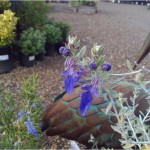 |
Bush Germander Sporting electric blue flowers on stunning gray foliage, azure Bush Germander is a drought tolerant, winter blooming show-stopper. Can be sheared to any height or shape. Left alone it will be about 5′ high, Bush Germander has been seen in a neighborhood nearby kept as a 1′ high hedge, and in our demo garden as a 5′, free-form shrub. |
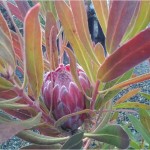 |
Proteas Proteas are thought of as frost tender in our area, but I did find this one in the nursery. The flowers are bold and exotic. growing on large shrubs |
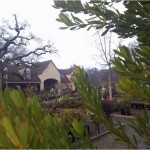 |
Leucodendrons
Leucadendrons are similar to proteas but hardy and generally grown for their leaf color though they do flower; just smaller. Being from Australia, they detest phosphorus, so don’t feed them a normal fertilizer, skip the feeding or provide a bit of cottonseed meal.
|
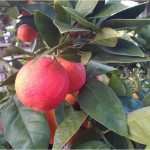 |
Citrus Citrus usually get all dressed up and showy in winter; loaded with fruit. begging to be eaten, but certainly attractive for their ornamental value as well. Heights vary and can be controlled with pruning. Citrus are somewhat frost tender, so be prepared to cover when cold. |

![prunny[1]](https://www.aldenlane.com/m/wp-content/uploads/2016/01/prunny1.jpg)
